Pundits are confounded by how Apple seems to ignore all their great ideas, but the company's strategy appears to be working out rather well on its own. Here's a look at why Apple has done so well while disregarding three major themes of Toxic Innovation Advice, pertaining to acquisition targets, obvious feature requests and commodity hardware.
Apple's Infinite Loop campus
Intelligence isn't just forming a plausible thought
Apple gets lots of advice, but real intelligence is not simply coming up with ideas. A key hallmark of intelligence is the ability to visualize parallel, potential scenarios, then determine the best alternative to pursue— while constantly reexamining how the environment and other players might change that playing field and require the calculation of a new decision matrix.
Much of the advice directed at Apple is not intelligent in an advanced sense, but is rather just reactionary, more akin to how basic organisms survive: seek to gobble up competitors, race to obvious goals, populate rapidly. That's the game plan for basic survival, not for successful "elite" advancement, whether in a civilization or an advanced commercial enterprise.
Consider why Apple is achieving an advanced level of success— not merely surviving— while it ignores the less intelligent thoughts and advice of so many bloggers, analysts and columnists, particularly in three major categories: acquisition targets; the delivery of many "obvious" technology features; and the pursuit of market share through high volumes of low end, commodity products.
Acquisitions: buy somebody else ideas after they become overvalued!
There's no shortage of advice seeking to explain how Apple should spend its cash making various acquisitions. However, those recommended acquisition targets are often companies that are already successful, such as Facebook or Netflix, or companies that don't report earning money but appear to be doing novel things, such as Tesla or Twitter or Spotify. There's no shortage of advice seeking to explain how Apple should spend its cash making various acquisitions
Buying something that has already achieved success (or is already valued as having achieved success) is risky. It's like trying to transplant a fully grown tree. Moving a large tree is complex and difficult; even if it takes root completely and isn't damaged in the transition, it isn't going to grow as fast a young tree, planted fresh.
Major mergers and acquisitions are often troubled with similar issues. If the two companies are already quite similar, there's likely lots of duplicative overlap that needs to be whittled away; if the two are too different, it is often hard to align their disparate corporate cultures.
Apple Beats acquisition rumors
Apple has been making dozens of acquisitions every year, but most of these are smaller companies or teams. The company's largest recent buy was Beats in 2014, a target that none of the usual advice-giving suspects had recommended that Apple purchase before the fact, and one that confused many after it was announced.
It's also noteworthy that there was little talk of how valuable Beats might be to anyone else prior to Apple's acquisition announcement. However, Beats appears to have been a brilliant purchase for Apple.
It provided a foundation for rapidly building out Apple Music, and brought an infusion of music industry executives and talent with deep connections into the Los Angeles entertainment scene, something that was literally and figuratively far removed from Apple's roots in Silicon Valley, where deals, solutions and products are arrived at in a completely different way.
There was also a strong diversity-synergy between the entertainment-world branding of Beats and the technology savvy at Apple. Among other things, this included Apple's unique custom silicon design savvy that gave birth to W1, a custom chip that now powers the wireless headphones sold under both the Beats brand and as Apple's own new AirPods product, a star hit of the 2016 holiday season. Beats appears to have been a brilliant purchase for Apple
Beats didn't have the capacity to launch such an ambitious custom silicon design on its own. It would also have been a huge risk for Apple to launch four different new wireless headphone products of its own. Together, Apple can share its technology with Beats while selling Beats' previously established product line in its stores as a youth, music and sport-oriented brand, enhanced with its custom chip technology.
Apple's other obvious home run acquisitions include Siri; P.A. Semi and Intrinsity (which helped Apple develop its custom silicon team) and AuthenTec (resulting in the Touch ID sensor, and eventually Apple Pay). All involved core technologies Apple wanted to own.
Like Beats, they were not ever recommended by pundits before the fact. Siri languished as an overlooked App Store title, P.A. Semi and Intrinsity were little-known specialized firms and other consumer electronics vendors saw AuthenTec sensors as being too expensive to use in mass market products. In part, the relative obscurity of these firms enabled Apple to snap up promising technology at an attractive valuation.
Apple didn't acquire Pebble
Conversely, there are also many examples of things Apple didn't acquire, despite many suggestions. For example, it didn't buy Pebble (as was being thrown about back in 2013), but rather developed its own Apple Watch program internally, using iOS as a starting point.
Nobody predicted this would happen, despite it all looking rather obvious in hindsight. Instead, Pebble's chief executive at the time scoffed that "the technology isn't sufficiently developed to truly miniaturize the full computing power of a smartphone in watch format," despite the fact that that was exactly what Apple was working to do.
Once it achieved this, Apple got little recognition from the cynical media for having pulled off the apparently impossible, a feat that Google and its partners are still struggling to deliver years later, despite throwing their beta plans out in public years ahead of Apple.
The reason so many members of the media still think that Apple Watch is some sort of failure while other products (notably Amazon's Alexa) that sell in smaller quantities and generate far lower revenues and profits (not just for the manufacturer, but also for third party app partners) is because so many of today's journalists confuse being critical of the elite with being actual journalists who report reality rather than seek to whip up entertaining sensationalism.
America has now waded so deep into this pattern of cynical anti-intellectualism that we now have a national chief executive that doesn't understand basic policy, can't spell, and can't even speak in coherent sentences. But at least we don't have any "elites" running the country!
The tech media similarly puts Apple's elite work on the same scale as the shoddy products of rivals. Compare the review ratings that the Verge assigns Apple's high satisfaction, high volume sales of Apple Watch, iPhone and iPad with the me-too stuff its competitors throw out to audiences who are either disinterested or ultimately regret buying them. Poorly performing Google Gear watches and dysfunctional, low quality Google tablets are given virtually identical scores despite all their bugs and flaws. That's not journalism; it's advocacy of incompetence.
After Apple Watch shipped, Fitbit later acquired Pebble, but rather than buying a company that offered some potential value for growth, Fitbit basically covered Pebble's debts for some uncertain salvage value, then canceled all of its products, resulting in a very un-Apple-like outcome for Fitbit.
Apple didn't acquire Skype
Apple also didn't acquire Skype. Instead, it developed iChat and then iMessage and FaceTime internally. Rather than ending up with a "Not Invented Here" codebase from Estonia to integrate into its own platforms, Apple's incremental, internal development of its own chat and video messaging platforms created a product that was easier for Apple to manage and take in new directions, as it did with last year's iMessage Apps for iOS 10.
In contrast, Microsoft paid $8.5 billion for Skype in 2011, less than two years after its previous valuation at $2.75 billion. Microsoft's big outlay was forced higher because everyone knew about Skype and already perceived it as having value. Microsoft likes to brag about how much "market share" Skype has among internet calls, but doesn't really talk about how much profit Skype has ever actually generated for the company.
That makes Skype a lot like Google's YouTube: a popular but not really commercially successful company acquired at a very high price. In fact, Google and Microsoft have made a series of very expensive, unsuccessful acquisitions that mostly just wasted their time and resources: aQuantive and Nokia cost Microsoft over $15 billion, while Motorola and Nest cost Google a similar amount. Across all of its decades, Apple hasn't ever spent $15 billion on acquisitions in total, let alone on two massive duds.Across all of its decades, Apple hasn't ever spent $15 billion on acquisitions in total, let alone on two massive duds
In contrast, Beats, Siri and AuthenTec have all already sold many billions worth of high profit hardware, in addition to secondarily also making Apple the leader in wireless headphones, in voice assistance, and in mobile security and payments.
Some acquisitions Apple has made haven't worked out as well. The $275 million paid for Quattro Wireless for Steve Jobs' iAd initiative didn't work out as expected and was effectively abandoned due to the resistance of advertising agencies seeking to preserve their access to user data. However, the number of duds Apple has made pales in comparison to the massive acquisition waste of many of its competitors.
At the same time, Apple allocated $15 billion last year to spend on its own tooling, production capacity and other CapEx investments, and intends to spend a similar amount in 2017. That's effectively the opposite of acquiring external talent and products; Apple invests much more into building its own technology than it does in trying to buy up outside ideas.
Better alternatives to acquisition
When you look at the cliche acquisition targets regularly cited for Apple (Tesla, Dropbox, Uber, Square, GoPro, Spotify and of course, Netflix), none of these have the attractive valuation of an unknown, untapped technology or offer the prospect of giving Apple a quick route into a new business segment that it couldn't achieve on its own. In some cases, Apple is better off partnering with these firms rather than buying them.
Everyone buying Netflix subscriptions through iTunes is already giving Apple a cut of the original content / streaming business, for example, without Apple having to deal with the issues an acquisition would involve: having to renegotiate content contracts, integrate teams, cut duplication, assume new risks and pay through the nose for the already-recognized valuation Netflix has earned.
Another example of Apple mitigating acquisition risk relates to the real-world failure of GT Advanced Technologies, which was unable to supply sapphire to Apple as expected. Had Apple simply acquired GTAT, it would have been on the hook for at least another billion dollars of failed investment capital. Instead, Apple partnered with the company and partially funded the project with an advance, managing its own exposure to risk.
That allowed Apple to avoid the disastrous consequences of Microsoft's Nokia or Google's Motorola, where the acquiring partner was left high, dry and short billions of dollars.
Going forward, Apple has indicated that that it plans to continue to seek out attractive, strategic acquisition targets, and is not limiting its options by cost alone. But the fact that Apple has been quite consistently identifying very attractive acquisitions that nobody has recommended— while avoiding the advice of pundits throwing out stupid ideas for acquiring things everyone already knows are valuable, while avoiding much of the risk of buying duds— should help the rest of us recognize why Apple can safely ignore all that advice.
Obvious incremental progress along straight lines isn't really innovative
Another form of Toxic Innovation Advice that Apple is regularly served, but regular declines, is pundit admonishments to follow the non-leaders and to double down on the past. Essentially, this is like advice to build faster horses rather than work on developing a car.
Just like those with lots of acquisition advice who don't really understand the value or strategy of acquisitions, there are lots of pundits with "innovation" advice who don't know the first thing about the value or strategy of innovation.
That's largely because identifying the potential of promising technology trajectories shares a lot in common with identifying the potential of promising acquisition targets. It's not the obvious, well known and already highly-valued ones that offer some prospect for growth.
The historic future of windows
One example of the "obvious" advice (or perhaps criticism) that Apple gets a lot of is: when will iPad get multiple windows like the Mac?
This question suggests that the company that mainstreamed the concept of graphical window-based computing in the early 1980s, spent a decade evangelizing it while PC audiences mocked it, then saw its work completely appropriated by Microsoft, then struggled for a decade to retake control of the valuable, premium segment of desktop windows-based computing... needs help understanding the value of windows based computing.
Apple certainly knows the value of windows-based computing. It has also demonstrated an understanding of its limitations. Microsoft hasn't. When it sought to deliver its own mobile devices, it just re-copied the Mac on a smaller scale (above). Microsoft did this despite Apple's own public work on the early 1990s Newton MessagePad, which departed from a conventional windowing interface to provide a new screen-based UI more appropriate for mobile devices.
Microsoft didn't stumble onto the limitations of windows until after Apple shipped iPhone, which completely rethought how a mobile computer could present apps, documents and multitasking without using the Macintosh's windowing UI concepts developed more than twenty years earlier. Three years later, Apple reused the same iOS UI concepts to deliver iPad, enabling a new generation (and older generations) to use a mobile computing platform without the trappings of the pre-Millennium, non-mobile PC.
The tech media largely responded with bewilderment, critical that iPad didn't run "powerful" desktop PC apps the way Windows Tablet PCs promised to do. Microsoft mocked the iPad as a "consumption" device, while its sycophant white paper research firm partners dutifully segregated the reporting of iPad sales from sales of PCs and Tablet PCs running "a real operating system."
What made Microsoft, its research allies and its tech media flacks all look like fools wasn't just me writing about how stupid they were, it was that the public rushed out to buy tons of iPads and left Windows PCs to stagnate and collapse on a worldwide scale. Apple made a massive leap in computing marketshare by building a new kind of computer that appealed to new audiences.
Rather than recognizing that accomplishment, the tech media largely looked for ways to dramatically belittle Apple, insisting that netbooks could do the same thing (they did not, not even with Google's Chrome branding), then hoping that Microsoft's own belated attempt to rethink the PC with its hybrid Metro UI would help it to beat back iPads and iPhones (it did not), then hoping that shipments of Android tablets would stop Apple (they did not). Apple continues to remain the world's largest vendor of tablets, and sells 80 percent of U.S. tablets sold for more than $200 and the majority of enterprise tablets. That's absolutely incredible.
The only thing that slowed down Apple's sales of iPads was their own lifespan. Working and being used more like conventional PCs than smartphones, iPads have a longer effective life that extends their replacement cycle. They are also less expensive than smartphones, commanding a significantly lower Average Selling Price.
Whether intentionally or not, Apple's decision to release a larger smartphone format with iPhone 6 Plus in 2014 (above) resulted in a new business for Apple between the smartphone and tablet: one that had the shorter replacement cycle of iPhones paired with an even higher ASP. The last three years of iPhone Plus sales have appeared to cannibalize iPad shipment volumes, but Apple can only be laughing all the way to the bank over it.
Meanwhile, HTC, Motorola/Lenovo and Samsung— the pioneers of "phablets"— have all stumbled and fumbled in their own efforts to exploit a new market segment, failing to sell as many premium phones, or tablets, or hybrid-sized fablets as Apple. Microsoft and Google have cranked out clownishly large fablets that the mainstream market effectively ignored completely.
But hey, let's focus on the losers and their ideas about how to bring old windowing UI concepts back on mobile tablets where they don't really make sense. Today, Google's ChromeOS (with exciting Android phone apps!) and Microsoft's Windows 10 are tenaciously clinging to the 1980's desktop UI while Apple effectively distances itself from its own creation.
We could examine why the original windowing UI vendor, which has been selling mouse-driven Macs for longer than any other graphical PC maker, shifted toward selling mobile computers with a screen-based UI devoid of Mac-like floating windows: the non-windowing UI of iOS presents one page of functionality (which can be split into multiple panes on iPad). This offers the best way to take full advantage of the limited screen real estate on mobile devices.
Apple also bought iPad-like Full Screen app conventions to the Mac in 2011 with macOS Lion. However, Apple didn't stumble upon this idea when it created the iPad. Mac apps had already been working toward the concept of Full Screen for years, particularly with iLife apps using the single window UI, as opposed to the older desktop convention of multiple floating document windows and tools palettes.
Migrating toward a Full Screen design also helped Apple to port its iWork apps to an interface that scaled from Mac to iOS to the web, making it much easier to achieve feature parity— and collaboration features— between them.
For users accustomed to a multiwindow environment, entering Full Screen might feel limiting and strange. I find myself— raised on 1980s computers— feeling irrationally uncomfortable inside of a Full Screen Mac app. There's something comforting about being able to see the Menu Bar, Dock and a bit of Desktop at all times. But much of today's new generation grew up on iOS, not the desktop computer of their parents. The future isn't floating windows, because placating the nostalgia of people who are nearly retired isn't as important as getting the most value out of the limited screens of mobile devices and wearables.
On the Mac, Apple has developed innovative ways to manage multiple screens of Full Screen apps— or combinations of Full Screen and multiple windows— with Mission Control and Spaces. That's much more intelligent and valuable innovation than trying to just shoehorn multiple floating windows into iOS.
Seeing the future in the now, by understanding the past
Expecting the windowing desktop UI to carry on perpetually into the future is like expecting that PCs in the 1990s would eventually become thin client, dumb terminals for centralized 1980s mainframes.
That was actually an expectation of some in the late 1990s, observable in initiatives like the NC (Network Computer) advocated by Larry Ellison of Oracle as an alternative to Windows PCs. He even tried to buy Apple at one point in order to make that happen. Oracle worked with Olivetti to create a joint research lab that developed a handheld thin client tablet NC called the Videotile. It failed; the hardware work was later virtualized into software for VNC screen sharing on conventional PCs.
A decade later, Jobs introduced Apple's iPad, not just as a dumb thin client display remotely showing content from networked server, but as a powerful native app platform with wireless networking support. Jobs ability to "see the future" wasn't magical; he just arrived a delivering a product that better fit the needs of current users. Oracle's Videotile required expensive network and server infrastructure to do anything. iPad was valuable everywhere, all the time.
Jobs' iPad went on to sell record scores of millions of units, generated incredible billions of dollars in revenues and help finance new generations of custom ARM silicon designs from A4 through today's A10 Fusion. But it wasn't just a success "because Jobs was an smart inventor." iPad built upon all of Apple's existing work to develop iPhone as a compact, ultraportable general computing mobile device. And iPhone was built upon the OS and app development frameworks that built the Mac platform. Each step brought forward concepts that worked and changed ones that no longer did.
The core concept of a multifunctional, handheld electronic tablet computer had been dreamed up in science fiction from the 1960s, if not earlier. The difficult part was not the concept, but in solving the engineering issues required to make it work, and in building an operational supply chain capable of manufacturing it, marketing it and selling it on mass scale at a sustainable profit. All while recognizing what parts of the user experience needed to remain consistent and which parts needed to change to accommodate the evolving needs of users.
That all happens to be within Apple's core competency, and within the vast blindspot of Apple's critics.
Commodity basic hardware is a terrible business
A third form of Toxic Innovation Advice provided to Apple pertains to the market it should be serving. Pundits have regularly been wrong about who Apple should be targeting, back to the days when Apple itself wasn't really sure who it should be building products for.
In the beginning, Apple's most valuable asset was its ability to mass produce computers. That shifted with the development of the Macintosh, where Apple's development of ease-of-use in the user interface became more valuable than its ability to simply build PCs (something anyone could do). Apple's legendary ease-of-use opened up new markets among people who'd never used computers before, including many artists and designers.
When Microsoft was granted full rights to appropriate Apple's work in the early 1990s by U.S. courts, the Macintosh lost much of its proprietary value to the copycat, commodity Windows PCs of Microsoft's licensees. Apple shifted to focus upon a new advantage: performance.
At a time when Windows PCs could barely play audio, Apple sold multimedia Macs with the ability (via QuickTime software) to play full motion video. Apple also copied Steve Jobs' newly launched NeXT by incorporating fast ASP chips in its high end Macs for fast signal processing. It also worked with IBM to develop PowerPC processors for a new generation of Power Macs, after working with Acorn to codevelop fast, efficient ARM mobile chips for use by Newton. Apple also began using GPUs and developed advanced software for acceleration in other areas, focusing largely on multimedia, graphics and publishing.
Apple'e performance-centric efforts of the 1990s resulted in premium market share, focused largely on higher end buyers. Critics complained that Apple should be focusing on basic PC users, and encouraged the company to sell lower end Macs and to license its Mac OS to third parties. However, that advice backfired as new Mac licensees also recognized that profits came mostly from sales of higher end Macs, starving Apple of its own premium revenue stream.Apple'e performance-centric efforts of the 1990s resulted in premium market share, focused largely on higher end buyers. Critics complained that Apple should be focusing on basic PC users
While continuing to work on ease-of-use and performance as differentiating features of the Mac— and struggling to do so as Microsoft, Intel and their partners outpaced its own efforts in performance— Apple next capitalized on two emerging weaknesses of Microsoft in the 2000s: integration and security.
Microsoft had built its business on monopolizing the commodity PC OS business, the very thing pundits had recommended Apple copy because it appeared Microsoft was doing so well at it. Without a monopoly, however, Apple couldn't sell enough OS software to sustain its development efforts. Conversely, Microsoft's monopoly meant that it, too, would be in trouble once anyone began significantly encroaching upon it. Microsoft's comfortable monopoly also made it lazy and complacent, resulting in what became an ugly, embarrassing security debacle that began really erupting in 2001.
That happened to coincide with Apple's own introduction of macOS X, a new platform built on NeXT's Unix-based operating system. Apple now had the ability to radically enhance its performance (including a move to hardware accelerated GPU graphics and video) while also introducing greatly enhanced stability and security.
At the same time, as a vertically integrated hardware and software vendor, Apple could also deliver products that "just worked," unlike Microsoft and its distributed relationship links with various independent hardware makers.
Integration proved to be even more important as the computing world shifted toward mobile devices. This was first observed with iPods, where Apple delivered a full product that sold in competition with various hardware makers' MP3 products running WMP software from Microsoft. Apple's integration work in building notebooks also delivered a strong advantage over the less integrated notebooks of Windows PC makers, where device drivers complicated things and battery life couldn't be optimized as well as Apple was doing on its own PowerBooks.
Pundits, stuck in the past, kept recommending that Apple give up on Macs to just sell iPods, or alternatively turn to low end netbook vendors for insight and inspiration. Instead, Apple accelerated its integration work and applied lessons learned in the mass production of iPods to build a new kind of computer with the iPhone: mobile, simple and secure.
Apple's "walled garden" of iPhone security was regularly mocked by PC pundits until the same kinds of virus and security problems Microsoft suffered through with Windows XP in 2001 began repeating again for Google's Android a decade later, except that instead of just losing emails or having a PC locked up by adware, users were now losing bank accounts, phone logs, photos, privacy and the use of their primary phone.
As Microsoft's monopoly control over computing began to collapse, Apple gained enough market share in the valuable premium sector to sustain a very profitable business, leaving Android with little more than a monopoly of low end commodity with the very thin layer of premium phone sales, scattered among various licensees.
Pundits keep counting unit sales of Android as if sales of $100 phones are similar to Apple's business of selling iPhones at an ASP of $600 (nearly $700 in the most recent quarter). However, it's clear that while Apple wants to sell lots of iPhones and iPads, it'd rather make more money selling nearly all of the premium market than make half as much or less in servicing the bulk of the low end of the market, as Samsung does.
While Apple doesn't strive for commodity, it does work to expand sales with more affordable offerings, but only after launching at a premium. The original iPod cost $399, although later models ended up below $99. The original iPhone was priced at $650, but Apple now sells a $399 model. The original iPad was priced at $499, which appeared cheap compared to $1000 and up PC Tablets, but was priced higher than cheap netbooks of the era. Apple now sells entry level iPads for $269.
Again, while pundits have consistently argued that Apple needs to sell cheaper products closer in price to its commodity peers, the company consistently returns to premium offerings that are more powerful and desirable. After years of pundits clamoring for a cheap iPhone, Apple released iPhone 6 and 6 Plus, creating a new more expensive iPhone tier. That price point raised again last year with iPhone 7 Plus, which turned out to be Apple's most popular Plus ever.
Apple released a less expensive iPhone SE, then the more expensive iPhone 7 PlusA report recently made waves speculating that Apple might introduce a new premium iPhone for $1000, although that's nothing special because Apple already sells an iPhone 7 Plus model that costs nearly as much. It does, however, highlight how misguided pundits were just a few years ago, when they predicted that Apple would be in serious trouble if it didn't release a new iPhone in the range of $300 like everyone in Android land.
Apple has similarly remastered a series of its other products at higher prices: Apple TV 4, the new iPad Pro line, and the thin, light new MacBook Pro featuring a TouchBar. That product was reviled as being far too expensive, but it turned out to be a hot seller that helped Apple set a new record in Mac sales— even despite the fact that much of the rest of its Mac lineup hasn't been updated in years.
Apple needs and deserves plenty of criticism. The critics just need to step up their game and understand what's going on better. So far, much of their advice largely deserves plenty of criticism of its own.
 Daniel Eran Dilger
Daniel Eran Dilger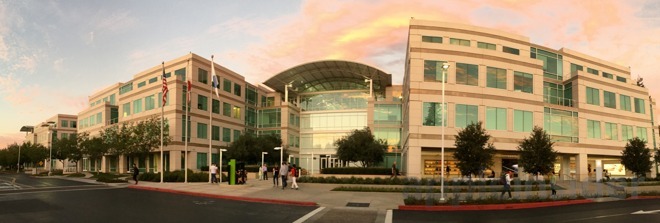
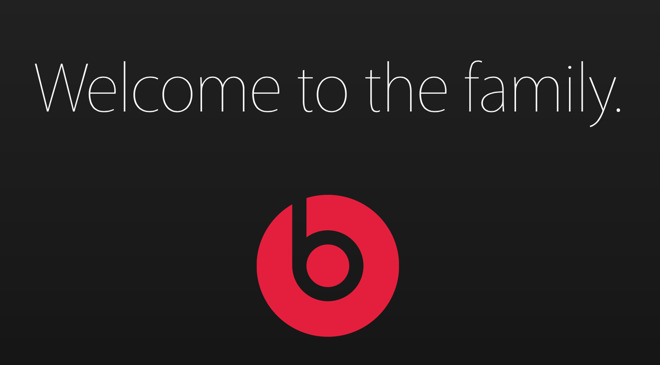
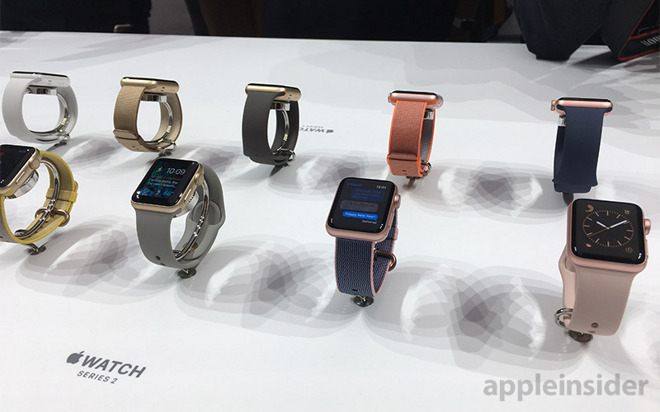


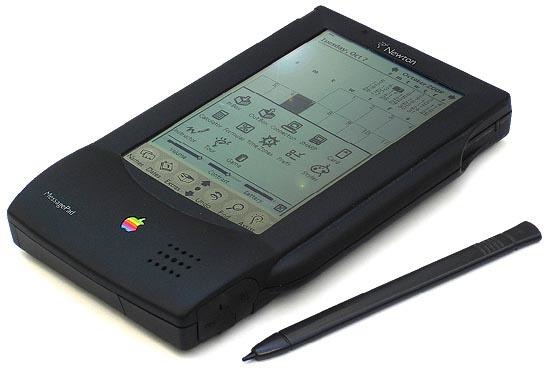
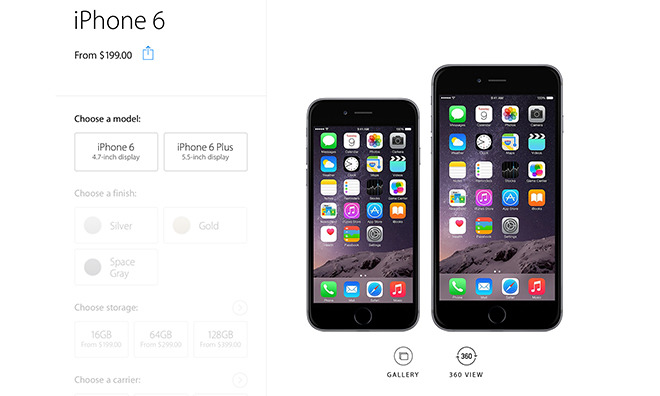
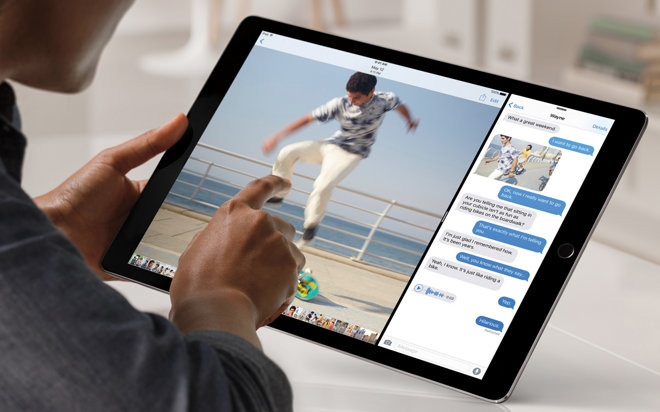







-m.jpg)






 Charles Martin
Charles Martin
 Christine McKee
Christine McKee
 Wesley Hilliard
Wesley Hilliard
 Malcolm Owen
Malcolm Owen
 Andrew Orr
Andrew Orr
 William Gallagher
William Gallagher
 Sponsored Content
Sponsored Content







89 Comments
$1000+ iPhone is tolerable as resale of previous gen remains so high. For my main computer outside of the office, at a cost of about $500/year, I am a steady, happy customer.
Simple reason Apple ignores pundits is that they have a complete picture of what they are doing and where they are going. Pundits don't so make guesses where they think Apple should go.
In other words it's easy to look back with hindsight and point out all the errors.
It should be noted that Jobs personally made a pitch to buy Dropbox (rumored offer $800M), but they turned him down.
I'm not disagreeing with the premise of this article -- indeed the Macalope makes a career out of it -- but 4740 words to tell us that "Apple doesn't listen to tech pundits and look at them; maybe you shouldn't either"? Really?